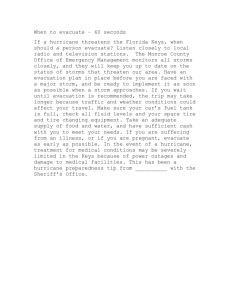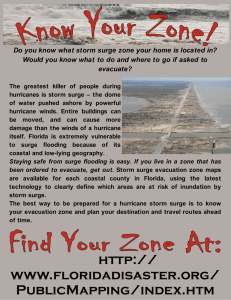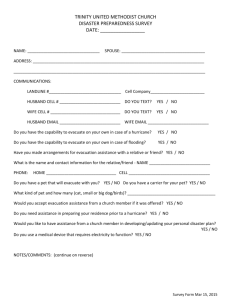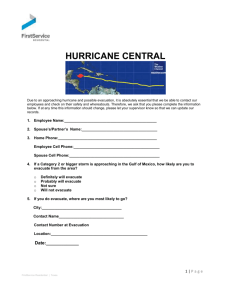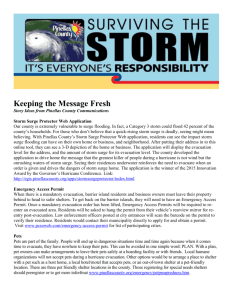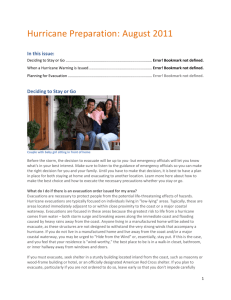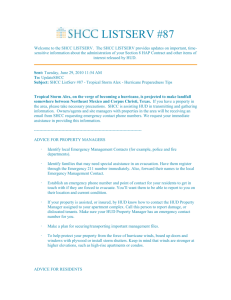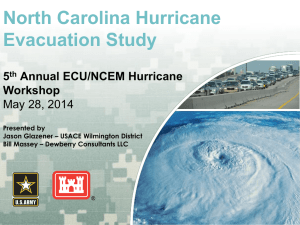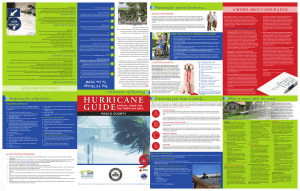Evacuating FHE
advertisement
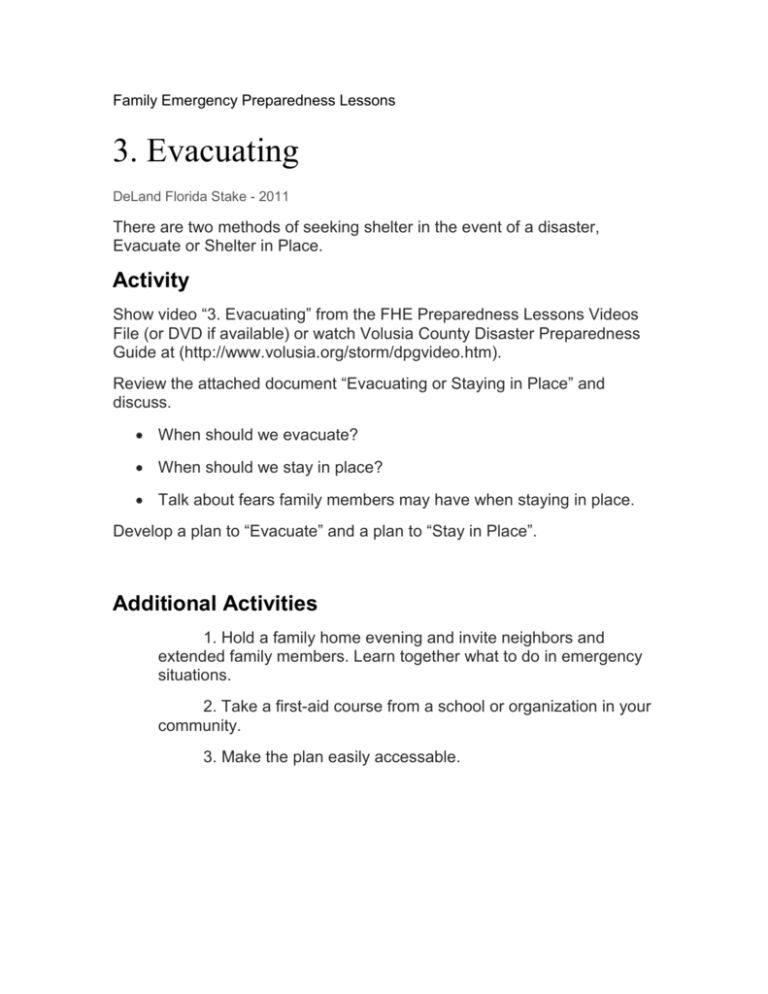
Family Emergency Preparedness Lessons 3. Evacuating DeLand Florida Stake - 2011 There are two methods of seeking shelter in the event of a disaster, Evacuate or Shelter in Place. Activity Show video “3. Evacuating” from the FHE Preparedness Lessons Videos File (or DVD if available) or watch Volusia County Disaster Preparedness Guide at (http://www.volusia.org/storm/dpgvideo.htm). Review the attached document “Evacuating or Staying in Place” and discuss. When should we evacuate? When should we stay in place? Talk about fears family members may have when staying in place. Develop a plan to “Evacuate” and a plan to “Stay in Place”. Additional Activities 1. Hold a family home evening and invite neighbors and extended family members. Learn together what to do in emergency situations. 2. Take a first-aid course from a school or organization in your community. 3. Make the plan easily accessable. Evacuating or Staying in Place Should you evacuate? Yes, if you: Live in a storm surge zone. Live in a low-lying or flood prone area. Live in a mobile home or recreational vehicle. Require a respirator or other electric-dependent medical equipment. No, if you: Live in a sound structure and the categories listed under “yes” do not apply. The evacuation plan Storm surge is the most deadly of hurricane hazards. The colored areas on the storm surge maps are vulnerable to storm surge. Storm surge is salt water flooding which rushes over coastal and river areas – near where the eye of the hurricane strikes – destroying homes and businesses. Hurricanes are categorized on a scale of one to five depending on the strength of the winds. Storm surge can reach seven feet above sea level in a category 1 hurricane to as much as 28 feet above sea level in a category 5 hurricane. Depending on the track and strength of a threatening hurricane, local officials may order one of five evacuation levels. These are called Hurricane Evacuation Categories. These levels correspond to the flooding that is likely to occur from the five categories of hurricanes. If you live in a mobile home, manufactured home or recreational vehicle, you must evacuate for all evacuation levels regardless of where you are. These structures are extremely vulnerable to hurricane winds. If you live in an area ordered to evacuate or in a mobile home, manufactured home or RV, gather your emergency supplies, secure your home and leave immediately. Failure to obey an evacuation order is a violation of Florida law. Residents of condominiums should follow evacuation instructions given to people in single family homes. Even if your condominium is not damaged severely, you may be without power for days. Evacuating Know where you are going (family, friends, hotel/motel, public shelter). Take a map showing two routes to reach your destination. Notify family, friends, and caregivers of your location. Secure your home and property. Take your emergency supplies. Do not delay your evacuation. Bridges All bridges will be locked down when winds reach a sustained 39 miles per hour or a land evacuation is ordered. Before a complete lockdown, drawbridges will be raised on the hour for 15 minutes when boat traffic is present. Staying home If you are not required to evacuate, please: • • • • • Take the necessary precautions to protect your home and property. Check your disaster supply kit. Stay in your designated safe room during the event. Stay away from windows and glass doors. Turn off the electricity at the main fuse or breaker box if flooding threatens. • Run your generator outside the house and connect your appliances directly to the generator. Do not connect the generator directly to the fuse box or incoming power line. Back-feeding generators have killed power company line workers. If you live in a mobile home, remember: Mobile homes have flat sides and are lightweight. This type of construction does not allow the proper transfer of the wind load through the supports into the foundation and ground. They are extremely vulnerable to damage from high winds. Please: • Seek shelter elsewhere when threatened by a major storm. • Regularly maintain your tie-down straps and anchors. • Regularly check straps for rust or corrosion. • Protect your windows and doors.
